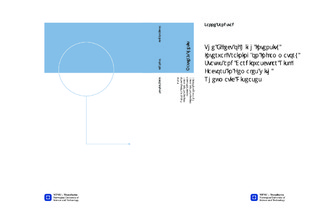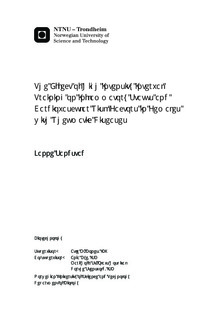| dc.description.abstract | Abstract BACKGROUND: Arthritis and other rheumatic conditions are a growing health problem, in terms of prevalence, disability and cost. Rheumatism is classified as chronic, systemic, and autoimmune diseases. Major symptoms are synovial inflammation and swollen joints, autoantibody production, deformation of cartilage and bone structures, and systematic features such as cardiovascular, pulmonary, psychological and skeletal disorders. The mortality rate in patients with rheumatoid arthritis (RA) is 1.5 – 1.6 compared to that of the general public, and cardiovascular diseases (CVD) account for 40-50% of the deaths. In addition, a five-fold increased CVD-risk, was observed in female patients with RA who were diagnosed at a young age. Scientific studies have shown that aerobic interval training of high intensity is effective in improving general physical status and cardiovascular health, but is not yet used as a treatment option for people with rheumatism. The aim of the present study was to find out if ten weeks of high intensity interval training was well tolerated by people with rheumatic diseases, and if it would improve activity of the disease, quality of life, and traditionally risk factors for cardiovascular diseases. METHODS: Eighteen women with RA and juvenile idiopathic arthritis (JIA), aged 20-50 years, were recruited to this cross-over study. Participants performed supervised interval training 2 times a week for 10 weeks on a spinning bike. The exercises consisted of four 4-minute intervals at ~90% of maximal heart rate (HRmax), interspersed with 3 minute recovery periods at ~70% of HRmax. Maximal oxygen uptake (VO2max), HRmax, one minute heart rate recovery (1-minHRR), blood pressure, body composition, blood analysis, molecular status (TNF-α, Interleukin-6 (IL-6), Human Cartilage Oligometric Matrix Protein (COMP) and Pentraxin-3), disease activity status, and questionnaires (Visual analogue scales (VAS), Modified Stanford Health Assessment Questionnaire (MHAQ), and SF-35) were measured before and after both exercise and control periods. Statistical analyses were performed using the software program SPSS. RESULTS: As a consequence of high intensity interval training (HIIT), the results showed that; VO2max increased by 12.2% (p < 0.001), 1-minHRR decreased by 3.7% (p = 0.02), BMI, body fat, visceral fat and waist circumference decreased by 1.2% (p= 0.04), 1.0% (p= 0.05), 0.2% (p= 0.08) and 1.6% (p=0.004), respectively, whereas muscle percentage increased by 0.6% (p=0.03). Significant differences were found for serum glucose (increased 6.3%, p=0.05), haemoglobin (decreased 2.2%, p= 0.03) and ferritin (decreased 24.0%, p= 0.006). High sensitive CRP (hsCRP) level decreased by 41.9% (p= 0.08). IL-6 mRNA increased by 32.6% (p=0.02), COMP levels increased by 12.6% (p=0.06), and Pentraxin-3 levels decreased by 27.3% (p=0.14). MHAQ score decreased by 24.6% (p=0.13), self reported global health VAS-score decreased by 33.8% (p=0.13), and pain VAS-score decreased by 34.8% (p=0.12). The participants scored themselves better for bodily pain and emotional role in SF-36. CONCLUSION: Ten weeks of HIIT was well tolerated by females with RA and JIA, and improved the disease activity, quality of life, and traditionally risk factors for cardiovascular diseases. HIIT might be recommended as a safe treatment for persons with RA and JIA. | nb_NO |

